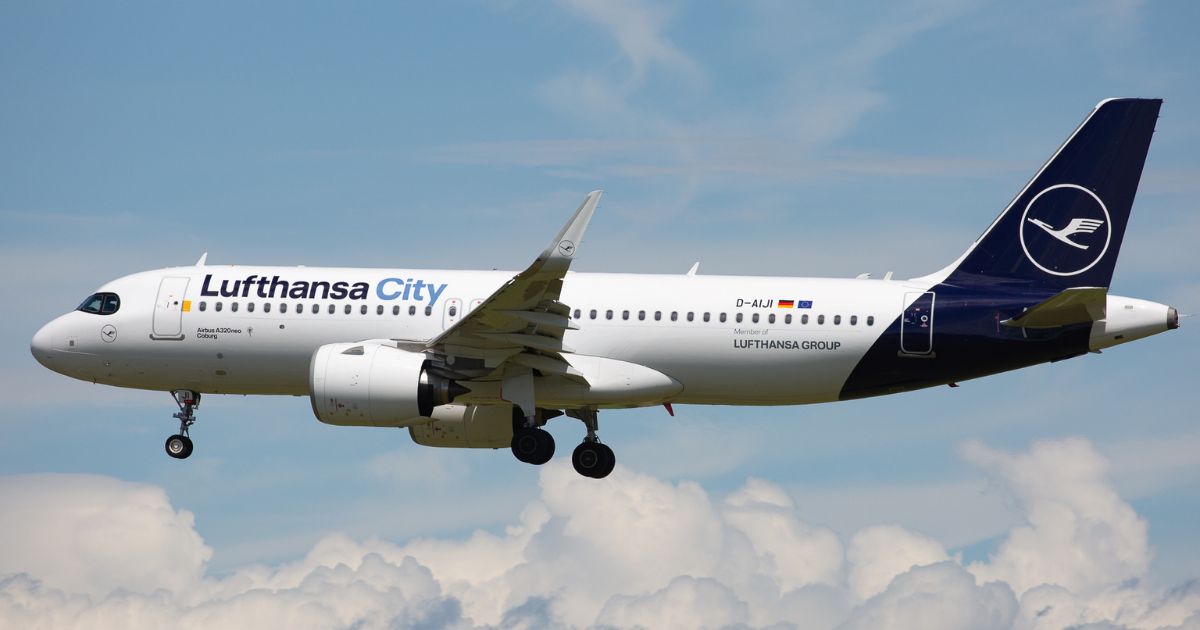
This article is included in these additional categories:
The Lufthansa Group has introduced an Environmental Cost Surcharge, a new measure to cover part of the increasing costs associated with regulatory environmental requirements. These costs include the statutory blending quota for Sustainable Aviation Fuel (SAF), adjustments to the EU Emissions Trading System (EU ETS), and other regulatory environmental costs such as the Carbon Offsetting and Reduction Scheme for International Aviation (CORSIA).
Implementation Details
Starting June 26, 2024, the Environmental Cost Surcharge will apply to all flights sold and operated by the Lufthansa Group departing from the 27 EU countries and the UK, Norway, and Switzerland. The surcharge will be levied on departures beginning January 1, 2025, and will vary depending on the flight route and fare, ranging from $1 to $78. It will be displayed in the price details on the Lufthansa Group Airlines booking pages.
Rationale Behind the Surcharge
Despite the Lufthansa Group’s substantial investments in new technologies and innovations to make flying more sustainable, the airline group acknowledges that it cannot fully absorb the rising costs imposed by regulatory requirements. Therefore, the new Environmental Cost Surcharge will cover a portion of these costs for 2025.
Climate Protection Targets
The Lufthansa Group has set ambitious climate protection targets, aiming for a neutral CO? balance by 2050. By 2030, the group seeks to halve its net CO? emissions compared to 2019 through a combination of reduction and compensation measures. Key strategies for achieving these targets include:
- Net Carbon Emissions Reduction: Lufthansa aims to halve its net carbon emissions by 2030 compared to 2019 and achieve a neutral CO? balance by 2050.
- Fleet Modernization: The Lufthansa Group has over 250 new aircraft on order, which are expected to reduce fuel consumption and CO? emissions by up to 30% compared to older models.
- SAF: The group uses SAF produced from biogenic residues, such as used cooking oils, and is actively working with partners to increase SAF availability.
- Optimization of Flight Operations: Continuous improvements in flight operations to enhance fuel efficiency and reduce emissions.
- Innovative Technologies: Implementing cutting-edge technologies like AeroSHARK, an aircraft surface film inspired by Sharkskin that reduces drag and lowers fuel consumption by approximately 1%.
- Intermodality and CO? Compensation: Promoting interlinking modes of transport and offering passengers options to offset their flight-related CO? emissions through SAF and certified climate protection projects.
As of 2023, Lufthansa’s carbon dioxide emissions were approximately 88 grams per passenger kilometer, a slight decrease from the previous year.
Switzerland and the UK Systems
Since 2012, the EU ETS has controlled and limited CO? emissions through certificate trading for all flights within the European Economic Area (EEA). The Lufthansa Group must comply with similar systems in Switzerland (CH-ETS) and the UK (UK-ETS).
Switzerland operates an independent emissions trading system, CH-ETS, encompassing approximately 100 installation operators responsible for about 5 million tonnes of CO? equivalent (CO?eq) emissions annually. Additionally, nearly 200 aircraft operators emitting around 1 million tonnes of CO? per year participate in this system. Since 2020, CH-ETS has been linked with the EU ETS, marking it as the world’s first international treaty to connect emissions trading systems. This linkage allows participants in CH-ETS to engage in European emissions trading, enhancing their flexibility in achieving CO? reduction targets.
Following its departure from the EU, the United Kingdom established the UK ETS, covering various sectors, including aviation and fossil-thermal power plants. The UK and Switzerland recently entered a memorandum of understanding (MOU) to integrate flights between their countries into their respective ETS frameworks. Consequently, flights from the UK to Switzerland operate under the UK ETS, while flights from the EEA to Switzerland fall under the EU ETS.
Background Information
As part of its “Fit for 55” climate protection program, the EU has mandated increasing SAF blending quotas, starting at 2% in 2025 and reaching 70% by 2050. This policy will significantly raise the operational costs for the Lufthansa Group, potentially amounting to billions of dollars.
Established by the International Civil Aviation Organization (ICAO) in 2016, CORSIA requires airlines to purchase certificates to offset growth-related CO? emissions in international aviation. This system aims to offset emissions exceeding the ICAO’s baseline, covering 85% of 2019 emissions for 2024 to 2035.
As of 2022, the Lufthansa Group utilized approximately 13,000 tonnes of SAF. This accounts for just under 0.2% of the group’s total fuel demand (7.6 million tons) and represents about 5% of the SAF available worldwide. Lufthansa is actively involved in projects to increase SAF availability and accelerate the development of next-generation SAF technologies, including Power-to-Liquid (PtL) and Sun-to-Liquid (StL) fuels.
- SEO Powered Content & PR Distribution. Get Amplified Today.
- PlatoData.Network Vertical Generative Ai. Empower Yourself. Access Here.
- PlatoAiStream. Web3 Intelligence. Knowledge Amplified. Access Here.
- PlatoESG. Carbon, CleanTech, Energy, Environment, Solar, Waste Management. Access Here.
- PlatoHealth. Biotech and Clinical Trials Intelligence. Access Here.
- Source: https://www.environmentenergyleader.com/2024/06/lufthansa-to-impose-new-surcharge-on-consumers-for-sustainability-and-regulatory-compliance/
